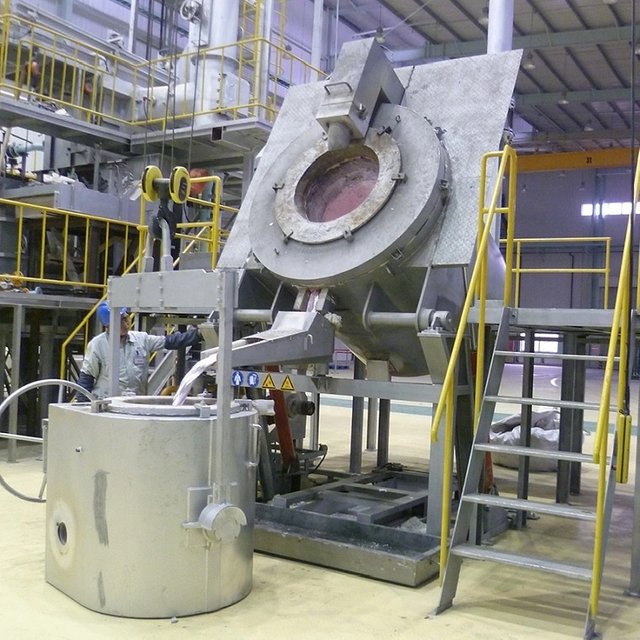
Cupola Furnace:
Traditionally used for melting iron, the cupola furnace is a vertical, cylindrical shaft lined with refractory material. Air is blown through the bottom to create a controlled combustion environment, melting the charge of iron scrap, coke, and limestone as it descends through the furnace.Induction Furnace:
This type of furnace uses electromagnetic induction to heat and melt metal. It consists of a crucible surrounded by a water-cooled coil, with alternating current passing through to induce heat-generating eddy currents within the metal. Induction furnaces are efficient and commonly used for melting various metals like steel, aluminum, and copper.Electric Arc Furnace (EAF):
EAFs use electric arcs between graphite electrodes and the metal charge to melt scrap metal. They are popular in steelmaking for their flexibility in charge composition and energy sources, as well as their high melting efficiency and ability to produce high-quality steel.Crucible Furnace:
This type of furnace has a refractory container (the crucible) in which the metal charge is melted. Heat is provided by gas, oil, or electric resistance heating elements surrounding the crucible. Crucible furnaces are versatile and commonly used for small-scale melting applications like jewelry making, investment casting, and small foundries.Reverberatory Furnace:
Reverberatory furnaces have a shallow, refractory-lined hearth with a low roof to reflect heat onto the metal charge. Fuel combustion occurs outside the furnace chamber, with hot gases passing over the molten metal surface. These furnaces are used for melting and refining non-ferrous metals like copper, lead, and zinc, as well as for recycling processes.
Each type of furnace has its own advantages and is chosen based on factors such as the type of metal being melted, production volume, energy efficiency, and operational requirements.